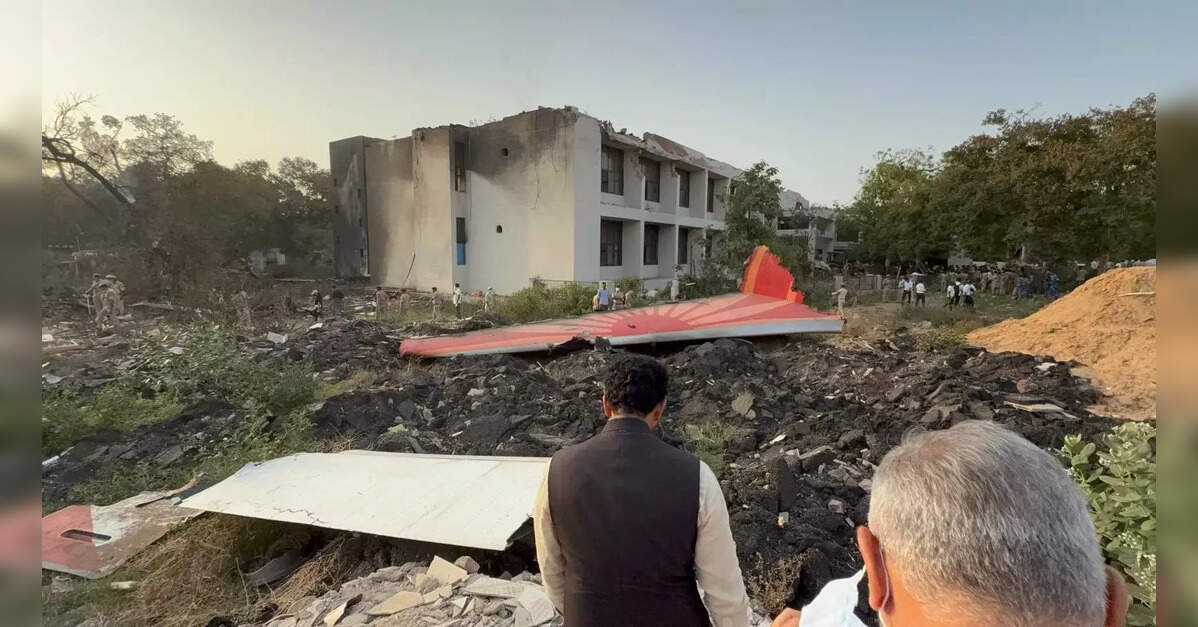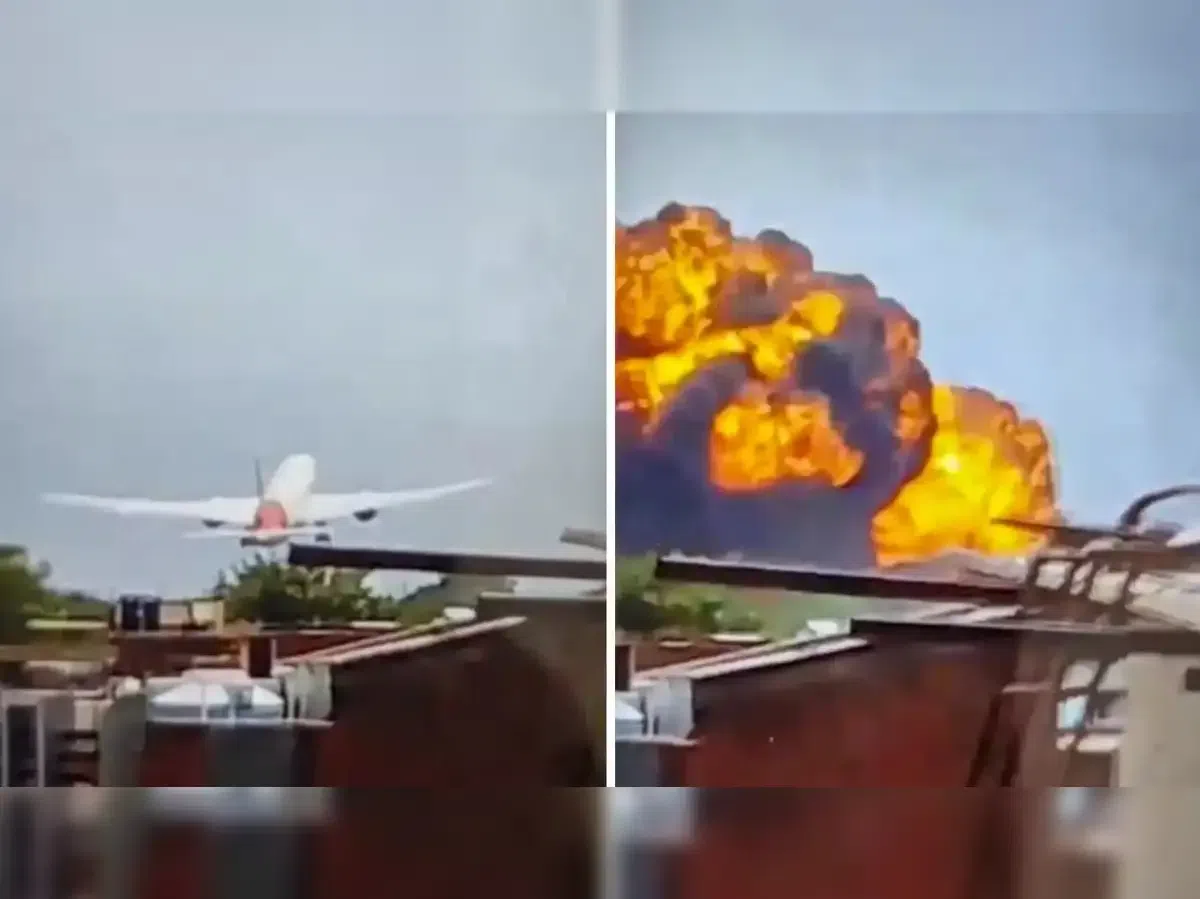Air India Plane Crash Triggers Safety Reviews and Investigations

The catastrophic crash of Air India Flight AI-171 on June 12, 2025, operating from Ahmedabad to London Gatwick, has propelled the Indian government to launch an immediate, high-level aviation safety review. This unprecedented incident, which claimed 241 lives from the flight and additional casualties on the ground, marks the first-ever crash involving a Boeing 787-8 Dreamliner, intensifying global scrutiny on aircraft safety, oversight, and systemic reforms within India’s burgeoning civil aviation sector.
Minutes after its 13:38 IST takeoff from Ahmedabad, the 12-year-old Boeing 787-8 Dreamliner, codenamed VT-AMB, carrying 230 passengers and 12 crew members, plunged into the perimeter of Sardar Vallabhbhai Patel International Airport, impacting the densely populated Meghaninagar area and BJ Medical College. The accident claimed the life of former Gujarat Chief Minister Vijay Rupani, and only one survivor, a British national of Indian origin, is currently undergoing treatment. Authorities are working to retrieve the flight data recorders, or “black boxes,” to determine the precise cause, with early indications pointing to a distress signal and immediate nosedive. Preliminary reports suggest potential technical faults and irregular flight dynamics, with a former senior pilot theorizing an engine power loss or insufficient lift.
A comprehensive international investigation is underway, led by India's Aircraft Accident Investigation Bureau (AAIB) in accordance with ICAO protocols. The U.S. Federal Aviation Administration (FAA) and aircraft manufacturer Boeing are actively collaborating in the probe. Furthermore, the Indian government is establishing a multi-disciplinary expert committee to strengthen aviation safety norms, infrastructure, and procedures across its skies, signaling an urgent push to prevent future disasters.
Air India, owned by the Tata Group, has pledged full cooperation. CEO Campbell Wilson expressed deep sorrow and assured transparent, verified updates. Tata Sons Chairman N Chandrasekaran announced ₹1 crore compensation for each victim’s family, full medical coverage for the survivor, and support for the reconstruction of the damaged BJ Medical College hostel. The Indian Association of Tour Operators (IATO) also extended heartfelt condolences, highlighting the impact on the travel, tourism, and aviation fraternity.
The crash has brought the Boeing 787 Dreamliner's reliability under intense scrutiny. Marketed for its efficiency, the Dreamliner's rollout has been marred by flaws globally. Air India’s own Dreamliner fleet recorded 136 minor technical glitches within its first 14 months after induction in 2011. Between 2015 and 2024, 32 significant incidents were logged, including hydraulic failures, windshield cracks, engine shutdowns, and cabin pressure loss. Globally, Japan Airlines grounded its 787 fleet in 2013 due to fuel leaks, and battery issues led to temporary groundings of all 787s by the U.S. and Japan. Boeing even advised Air India to avoid flying Dreamliners near high-level thunderstorms due to engine icing risks. Just six months prior to the AI-171 crash, another Air India Dreamliner (AI-113) reported a hydraulic leak, requiring grounding for 28 hours.
Further compounding concerns, a Boeing engineer, Sam Salehpour, filed a whistleblower complaint with the FAA in January 2024, alleging structural shortcuts and improperly fitted fuselage joints in Boeing's 777 and 787 jets, and claiming engineers were pressured to approve unperformed inspections. The FAA is currently investigating these serious allegations, which have heightened anxieties among travelers.
This tragedy is not an isolated incident but serves as a grim reminder of a recurring pattern in India's aviation history. Many high-casualty crashes have occurred at critical flight stages like takeoff or landing, pointing to persistent procedural or operational weaknesses. Notable past incidents include the 1996 Charkhi Dadri mid-air collision (349 fatalities due to miscommunication and lack of TCAS), the 1978 Air India Flight 855 crash (213 deaths from instrument failure and spatial disorientation), the 2010 Air India Express crash in Mangalore (158 deaths from pilot error and an unstable approach), and the 2020 Air India Express runway overrun in Kozhikode (21 deaths in heavy monsoon conditions). These incidents underscore systemic gaps in airline oversight, airport infrastructure, pilot training, and emergency response systems.
India's rapid aviation growth, fueled by rising tourism, faces a critical challenge. The gap between ambition and robust safety infrastructure is becoming visible. Recent crashes have already impacted travel insurance premiums, international travel advisories, and airline reputations, threatening India’s “Incredible India” tourism pitch. The Directorate General of Civil Aviation (DGCA) is under immense pressure to reassess current aviation standards, potentially leading to overhauls in pilot training mandates, cockpit communication protocols, and aircraft maintenance audits. Airlines may also face mandatory implementation of advanced monitoring systems. Beyond policy, there is a pressing need to cultivate a strong culture of accountability across carriers, air traffic control, and aviation training institutes.
The human toll of these disasters extends far beyond statistics, affecting grieving families, survivors, and communities near crash sites. The AI-171 crash is a stark wake-up call for global aviation, emphasizing the need for airlines to prioritize reliability over efficiency, for manufacturers to uphold stringent quality control, and for regulators to ensure thorough oversight. As India continues its aviation revolution with new airports and expanded routes, balancing ambition with unwavering safety standards is paramount for ensuring secure journeys in its skies.











